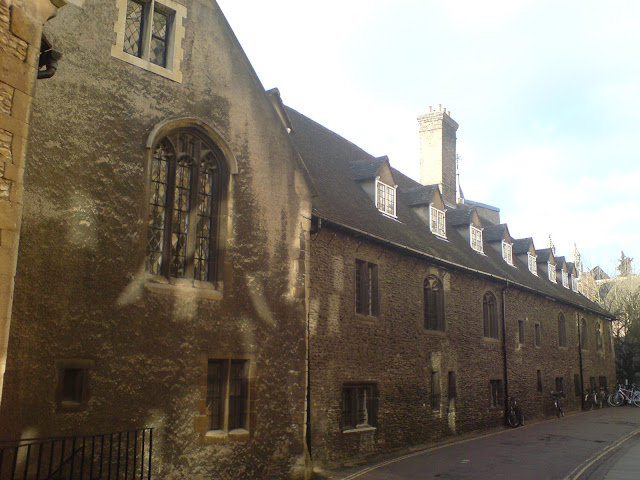The College has traditionally been one of the more academically successful colleges in the University of Cambridge. In the unofficial Tompkins Table, which ranks the colleges by the class of degrees obtained by their undergraduates, Corpus's 2012 position was 3rd, with 32.4% of its undergraduates achieving first-class results. The college's average position between 2003 and 2012 was 9th, though it has experienced a small decline in results since.
Corpus ranks among the wealthiest Cambridge colleges in terms of fixed assets, being exceptionally rich in silver. The College's endowment valued at £94.8m at the end of June 2015 and its freehold land and buildings were valued at £118m at the end of the fiscal year 2013.
The guild of Corpus Christi was founded in Cambridge in 1349 by William Horwode, Henry de Tangmere, and John Hardy in response to the Black Death. They determined to found a new college in the University of Cambridge, the sixth in the University's history. Later the same year the new guild merged with an older guild, the Guild of the Blessed Virgin Mary, which had been decimated by the Plague. The united guilds acquired land in the centre of town and their patron, the Duke of Lancaster,applied to King Edward III for a licence to found a new college, which was granted in 1352.
Construction began immediately of a single modest court near the parish church and in 1356 it was ready to house the Master and two fellows. The college's statutes were drawn up in 1356.The united guild merged its identity with the new college, which acquired all the guild's lands, ceremonies, and revenues.The grandest of these ceremonies was the annual Corpus Christi procession: a parade through the streets to Magdalene Bridge, the host carried by a priest and several of the college's treasures carried by the Master and fellows, before returning for an extravagant dinner. The parade continued until the English Reformation, when the Master, William Sowode, put a stop to it in 1535. The college continues to have a grand dinner on the feast day of Corpus Christi, the Thursday after Trinity Sunday.
The newly constructed court could house 22 fellows and students. The statutes laid down the rules governing the behaviour of fellows only. Students were not part of the foundation at this stage and would not come within the scope of the statutes for another 200 years.
Medieval period
In its early centuries, the college was relatively poor and so could not construct new buildings; thus Old Court has survived to the present day. It had no chapel, so the members worshipped in St Bene't's Church next door. For many years, particularly during the Reformation when Catholic references were discouraged, Corpus was known as St Bene't's. By 1376 it possessed 55 books, and many more would be donated or bequeathed over the succeeding centuries, including, most significantly, those donated in the 16th century by Archbishop Matthew Parker, who is celebrated by the college as its greatest benefactor.
Old Court
The back of Old Court, built in 1356, seen from the Old Cavendish Lab.
During the Peasants' Revolt in 1381, the college was sacked by a mob of townspeople (and apparently some students) led by the mayor which, according to the college, carried away its charter to be burned and plate while gutting the rest of the college buildings. Corpus was the only University college, although by no means the only University building, to be attacked. The revolt, which ironically took place during the Corpus Christi week, focused on the college as centre of discontent due to its rigid collection of "candle rents".The college claimed £80 (roughly £50,000 in modern terms) in damages.
In 1460 during the Wars of the Roses, the college paid for armaments including artillery and arrows, and protective clothing to defend the college's treasures from a "tempestuous riot".
Elizabeth, Duchess of Norfolk, and her sister Lady Eleanor Botelar née Talbot, who is believed by some to have been secretly married to Edward IV, endowed the college with scholarships in the 1460s and financed repairs to the college buildings. As a monument a 'talbot', the heraldic supporter of the Talbot family, was placed on the gable of Old Court and can still be seen today. At the same time the Master, Thomas Cosyn, built the college's first chapel and a passageway between Old Court and St Bene't's Church. Over the next few centuries, garret rooms were added in Old Court increasing student numbers.


No comments:
Post a Comment